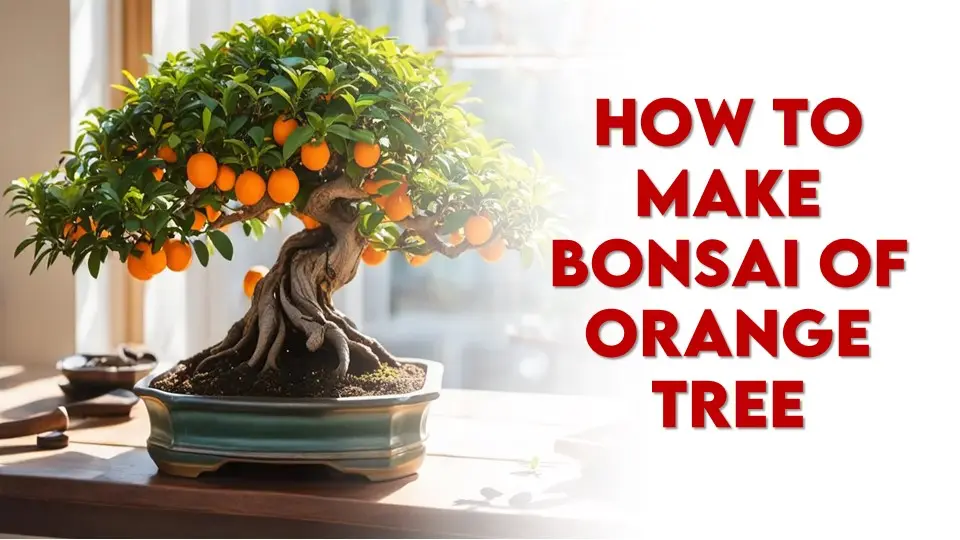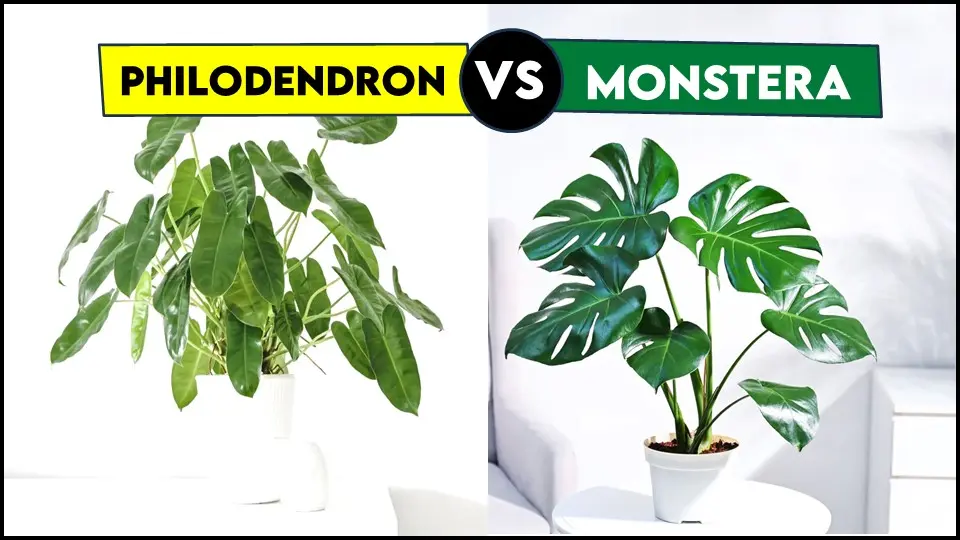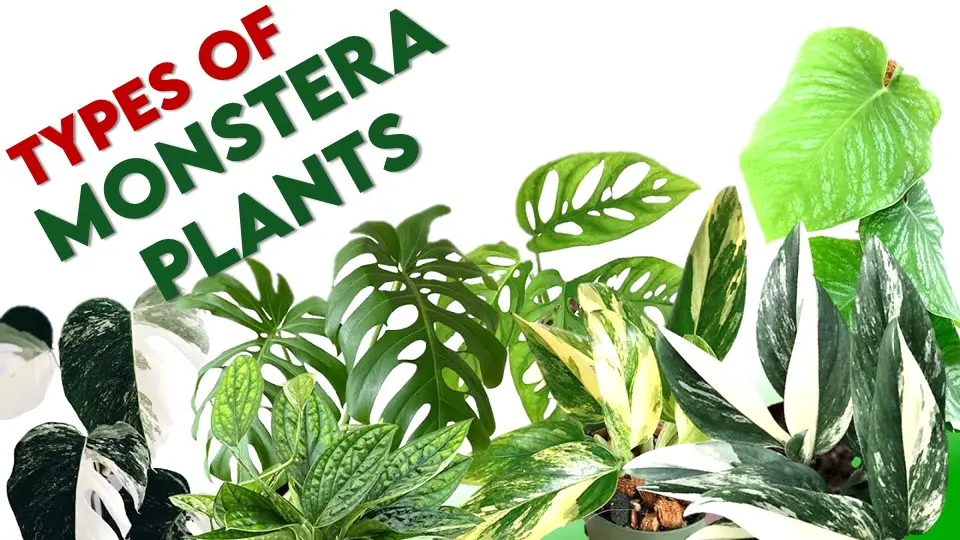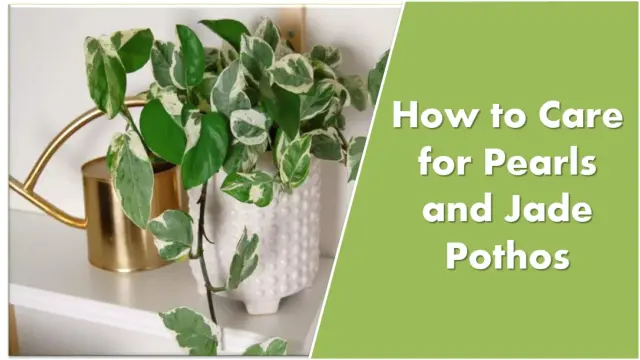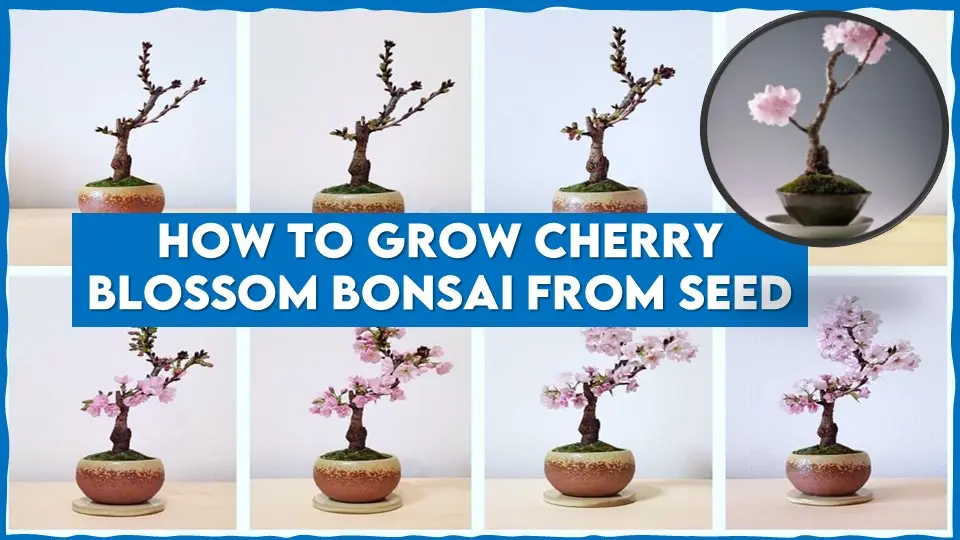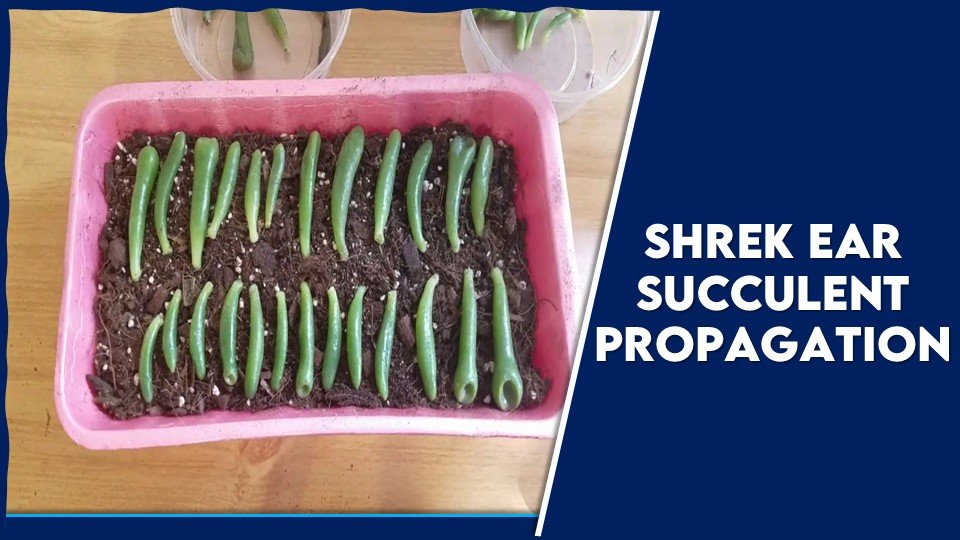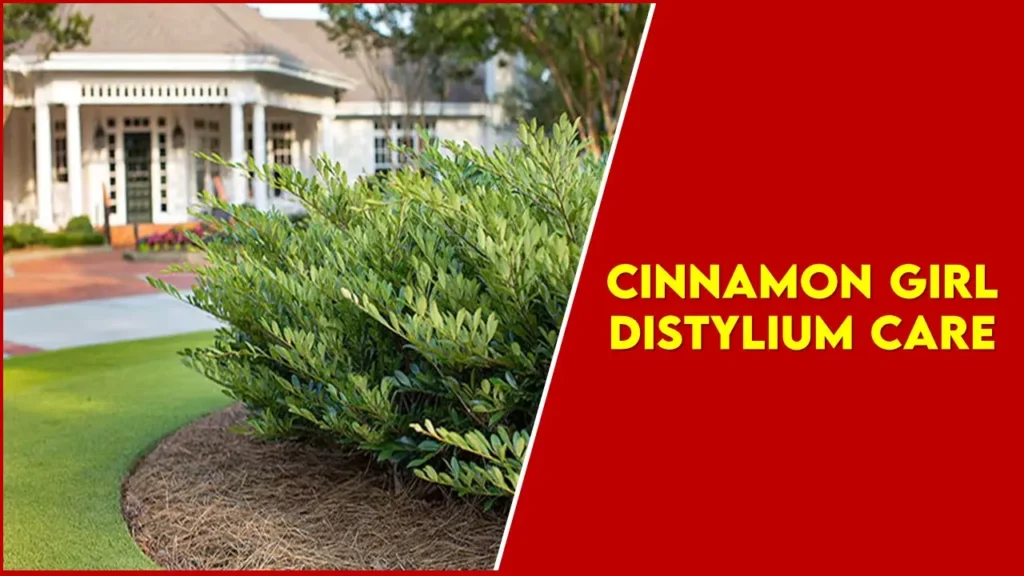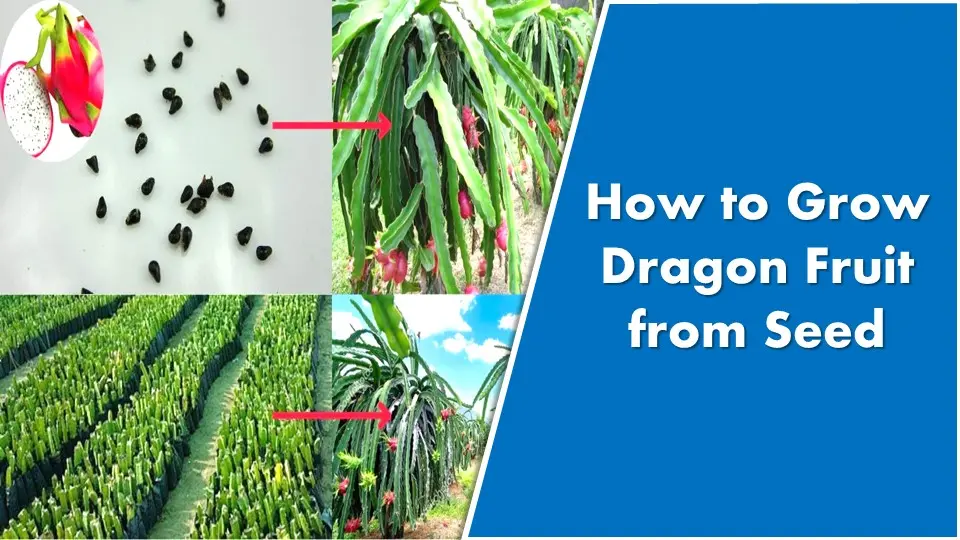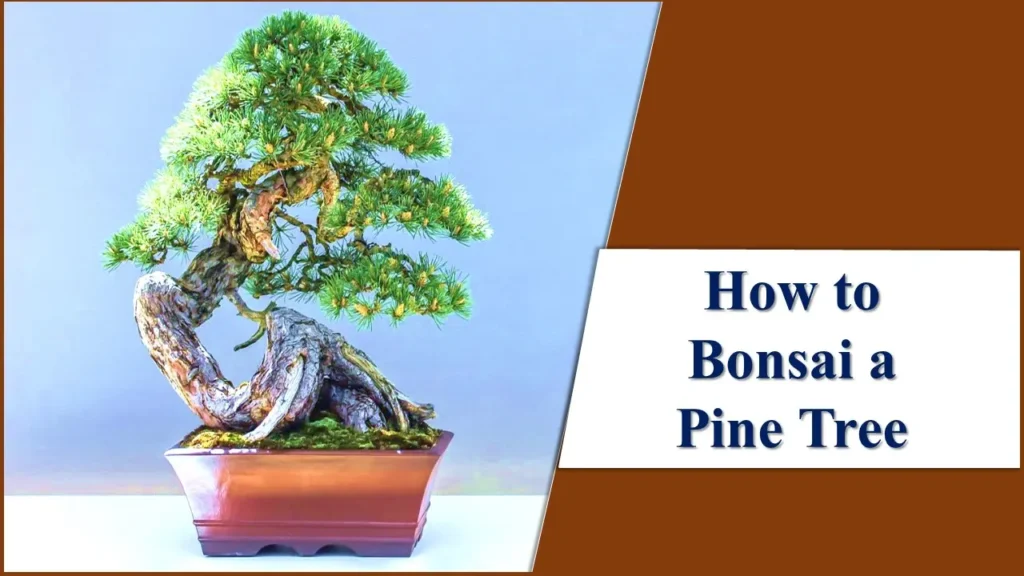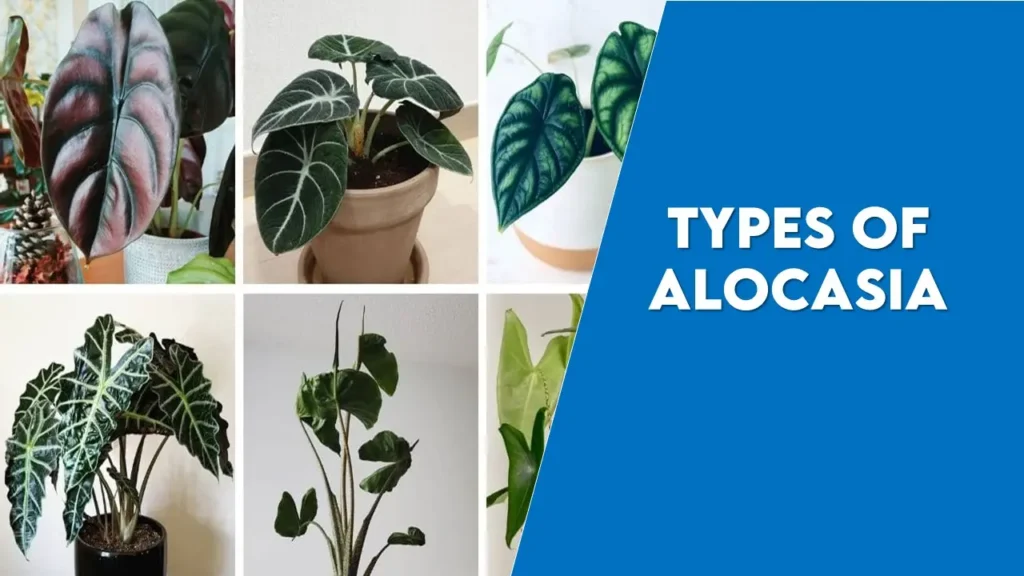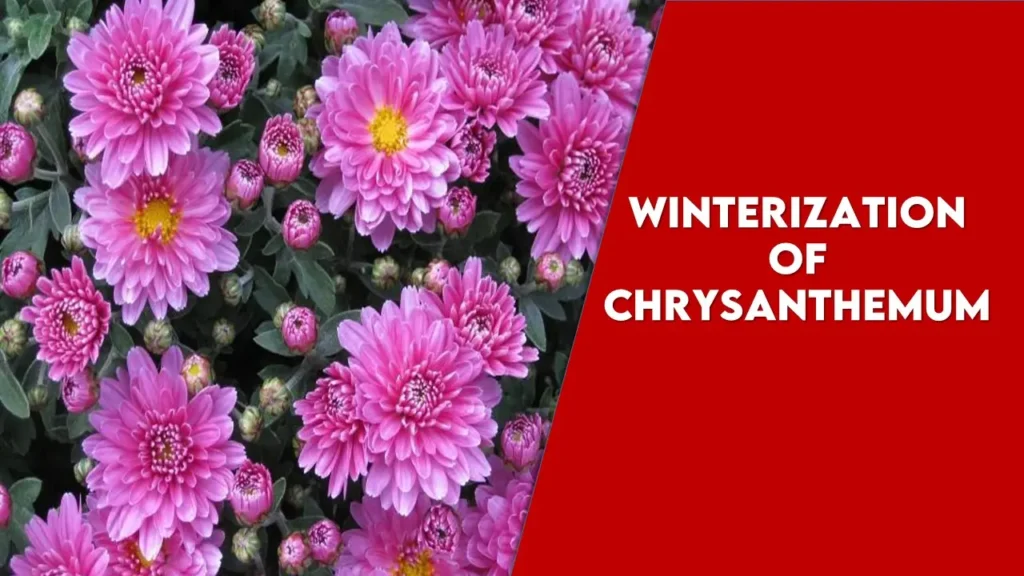How to Make a Bonsai Orange Tree and its Care
When you look at a bonsai, you must have wondered, why to bring a piece of art among your plants that may cost you an arm and a leg, but provide you with no real benefits. Well, you are not alone who think that way. Many canny gardeners around the world prefer plants that offer some additional benefits. For those discerning gardeners, let’s know how to make a Bonsai Orange tree that is not only beautiful but also provides fragrant flowers and sweet fruits all year round.
Additionally, the Orange tree is evergreen, ensuring that your bonsai will maintain its lush greenery throughout the year. It will provide you with fruits only after 2-5 years of its establishment.
The fruit obtained from the bonsai orange tree is known as calamondin orange, which is small, and sweet. Asia is where the bonsai and oranges both originated, hence their physical and climatological needs should be precise and well taken care of.
Some people may find it difficult to make an orange tree bonsai, but they must keep in mind that it is one of the prettiest bonsai. So a little more care and a little more love will surely give you fruitful results.
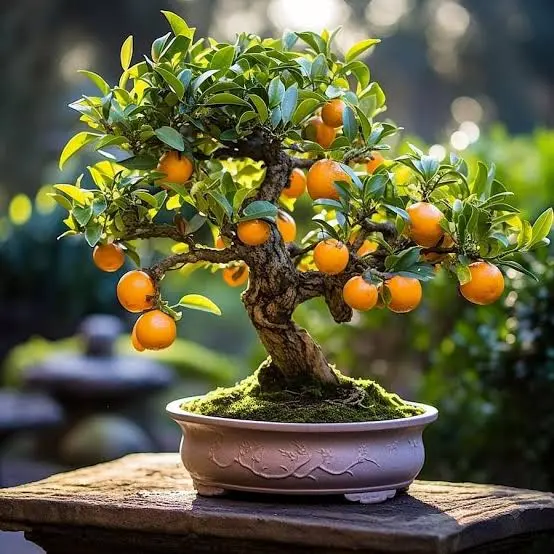
Things You Need to Make an Bonsai Orange Tree Pruning
Shears
Pruning is one of the most important parts of bonsai making, it provides shape to the plant and maintains its growth. It is very important to handle these shears carefully, any mistakes during pruning can cause serious injury to the plant, and expose it to diseases and pests.
Humidity Tray/ Stand
There should be some space left between the bonsai pot and the ground surface to avoid waterlogging and proper aeration. A bamboo mat, Iron Stand or turntable is used for this purpose. Bamboo mat is a cheaper option and a turntable can allow easy pruning. To avoid extra moisture around the bonsai, one can use, a humidity tray that absorbs it and creates a healthy environment for the plant.
Bonsai Tray/ Pot
A Bonsai tray is nothing but a shallow pot, specially designed for making bonsai. This tray has two holes in the base of the pot that allow easy framing and stability of wire that trains the bonsai. It is best to use an earthen bonsai pot for proper aeration in the soil. The Bonsai Trays come in different shapes, you can choose the one that matches your vibe or you can choose the pot shape based on the bonsai style.
Metallic Wire
A metallic wire is important for training bonsai. As the container is shallow and roots are heavily pruned in bonsai, it’s hard for the plant to stay straight in the pot, and wire that is connected through holes at the bottom of the pot helps the plant to do so. Bonsai experts prefer Copper wire over any other wire because of its flexibility and unbreakable nature. It also allows the stems to stand sturdy and cause no damage.
Bonsai Potting soil
Citrus plants usually prefer slightly acidic soil, but this is not done in the case of Bonsai, the pH of soil must remain close to neutral. In any case, never use a mixture that can cause waterlogged conditions in the pot. And do not add fertiliser, as bonsai is supposed to develop in low nutrient conditions.
There are several mixtures available in the market that could directly be used in the pot. The basic mix is Akadama, Pumice, organic potting compost, and grit. A Good bonsai compost consists of 2 parts of good fibrous loam, 1½ part coarse river sand and 1 part leaf mould. While preparing soil mixture the following aspects should be considered.
- Mixtures should be nutritionally balanced.
- It must hold the required moisture.
- Proper drainage for adequate exchange of gases.
How to Make a Bonsai Orange Tree
Bonsai Orange Tree can be made from cuttings or seeds. But in both cases following steps should be followed carefully.
Selection of Plant
The best variety for making bonsai orange tree is calamondin orange, which is dwarf, evergreen and flowers year-round. Yet, one must consider the climatic conditions while choosing their plant. The plant material used here should be free of pathogens and well-treated. If you are trying to make a bonsai from seed, first grow it in a normal pot and provide conditions as the normal orange needs to grow until it attains a height(4 inches) appropriate for making bonsai with several branches.
Cutting is the fastest method of making a bonsai, but make sure the plant material must have several branches, and roots are well pruned.
Prepare the Plant for Training
In both cases, the bonsai training is not done until it is grown for at least 2-3 years in the pot in the recommended soil mixture. When the plants are ready, it will be time to transplant them in a bonsai pot. It is pruned well as per the bonsai requirements and the pot is made ready.
Any soil that passes through the bonsai sieve shouldn’t be used for bonsai potting as it can cause muddy and waterlogged conditions around the pot. The drainage hole should be covered with crocs or broken pieces of earthen pots which allow proper drainage in the pots after the threading of wire in those drainage holes.
Determine the Style for Your Bonsai
Before training your bonsai, make a plan to style your bonsai. The style depends upon the feelings of its owner, it could be a straight upright bonsai, a Cascade type, clasped type, oblique or winding type, keep in mind that making an Ikadi-buki style is very difficult for an orange tree bonsai. Make preparations for styling and keep an eye on the branches growing it. Make sure that the plant does not look like a shrub.
- The canopy of the plant should start from one-third of the height of the tree.
- Side branches shouldn’t be thicker than the main trunk.
- Avoid the opposite branches to grow at the same height.
- Follow the thumb rule, that the height of the tree shall be six times the diameter of the trunk at the lowest point.
- The bonsai should be viewed from the front in such a way that no direct branch or root emerges directly towards the viewer.
- The plant must look decent and pleasing to the eyes of the viewer.
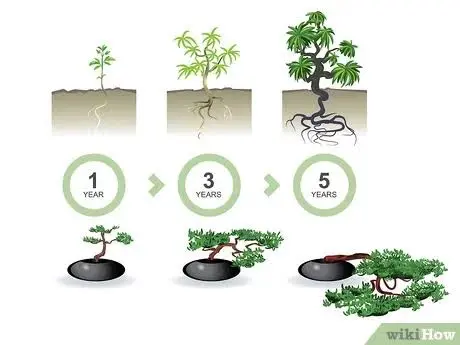
Pruning and Pinching in Bonsai Orange Tree
In bonsai, training and pruning go together. Always remember, A bonsai is kept dwarf not by starving but by various methods of pruning, viz. shoot pinching, leaf pinching and root pruning.
Shoot pinching: It is an important operation in bonsai growing. This helps to maintain the shape of the plant and reduces total leaf area by removing the shoots which will keep the plant dwarf. Remove all the unnaturally twisted branches and the branches that could create any disproportion in the view of the bonsai. Also, remove any branch that becomes comparatively thicker than the trunk.
Leaf pinching: Another method of reducing leaf area is through leaf pinching. This is done with vigorous growing deciduous trees at the time of active growth. Leaf pinching is done only once a year. After leaf pinching, the supply of water should be reduced drastically, as leafless plants are unable to draw enough water. During pinching operations, the bonsai orange tree should not be shaken at the base and roots disturbed.
Root pruning: when the sapling is ready for transplantation, at that time prune one-fourth of the roots. It is also necessary to prune a certain amount of roots, to avoid unnecessary absorption of nutrients and the roots that are dead or infested with some diseases or pests. It is done two weeks before transplanting or repotting. Pruning and pinching is not a one-time thing, it must be done throughout its life to maintain the shape of the bonsai.
The pruning is supposed to be done during the growing period and never cut the emerging buds, as these may turn into new stems or flowers.
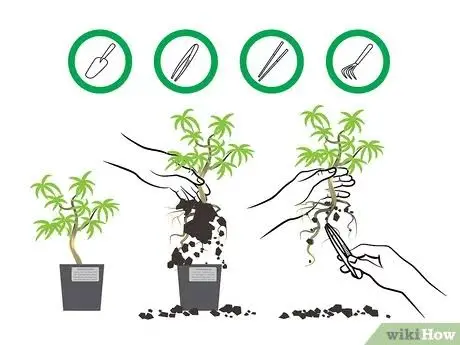
Wiring
To provide the desired shape to the bonsai, it is necessary to wire the plant carefully, the wire that was threaded along with the pot must reach the surface of the soil. If it is long enough, it could be used directly and if it is short, attach more wire along its length.
Bend the wire at a 45° angle to the trunk of the plant, and from there on, style the plant with the help of wire in the desired shape. Make sure the wire is firmly arranged along the branches of the plant, it must not cause any damage to the plant. With time, when the wire starts scaring the bark, it should be removed and rearranged.
What to do after the bonsai orange tree is established? Just give it the care it needs.
How to Care for a Bonsai Orange Tree?
Placement
A Bonsai should be placed at a height where it is easy to observe the plant growth and to avoid the prevailing waterlogged conditions. As orange trees are evergreen tropical, it is best to place them in a place receiving ample sunlight all day.
You don’t have to worry about the excess sunlight, just provide enough water during summer. But in winter and frost, protect the bonsai orange tree by placing it indoors near a south-facing window where it can enjoy a daily dose of sunlight.
If you are planning to develop a bonsai orange tree in a temperate region or a cold area, you must provide enough sunlight by artificial means. But keep in mind that bonsai should be placed in the shade during the initial few weeks of its establishment to avoid any shock, and then slowly increase its exposure to daily light in your garden.
Temperature
The optimum temperature for growing orange tree bonsai lies between 21-32°C. In any case, never allow the temperature to fall below 10°C, below this temperature, the plant would surely die.
If you are planning to grow it indoors, never keep it in a place with large temperature fluctuations, like that in front of an AC or heating vent. It also needs about 50-70% humidity for its development, and if the humidity level falls below this range, which is usually during winter, use a humidity tray.
Watering
As bonsai grows in a shallow container, watering is an important operation. During severe winters, watering once a week is sufficient, and during summers, watering thrice a day is necessary. During this period, syringing leaves with a fine spray of water 2-3 times a day will be beneficial.
The compost should be filled in a container leaving about 2-3 cm space from the brim to facilitate watering. Some experts suggest providing rainwater as many times as possible to save it from future shocks and to enhance its adaptability. Make sure, not to overwater the plant. During the days of continuous pouring place the bonsai orange tree indoors or in a shade.
Fertilising
Never provide excess fertiliser to the bonsai orange tree. Use only organic manure or FYM along with the soil mixture and one to two top dressings. These are slow releases that also maintain the growth of the bonsai. But at the same time allow the mixture to be light weighted with proper drainage.
Always use fertilisers in diluted form and any fertiliser that results in a change of the soil pH shall be terminated immediately. And avoid applying fertilisers during winter to avoid shocks.
Repotting
Although repotting a bonsai orange tree is not common and could be done after 2-5 years. The best time to repot a bonsai orange tree is during summers when the orange tree growth is maximum and the recovery rate is fast.
The first step of repotting is depotting and the second is potting. Use a similar pot as your previous one, prepare the same soil mixture and the pot should be only an inch or two larger than the previous pot.
A large pot as compared to the plant size is neither appealing to the eyes nor is it good for the overall health of the plant, such pots don’t allow proper drainage and make a presence of excess nutrients in the soil. During Repotting keep the primary root intact and cut about one-third of the whole roots, also remove any diseased or dead roots.
Reasons for repotting in bonsai are:-
- Damage to pot.
- In case of rotting or disease infestation.
- Excessive growth in bonsai roots.
- When the owner wants to change the style or pot.
Insects, Diseases and Pests in Bonsai Orange Tree
Insects, diseases and pests are not common in bonsai orange tree, one can observe aphids or yellowing leaves. It may be due to overwatering or waterlogged conditions in the pot. In case of yellowing, immediately stop watering the bonsai, if the conditions improve, report the bonsai by checking the soil drainage properties and prepare the mixture again.
Aphids are visible and can be controlled with the diluted spray of malathion. And to avoid any kind of these infestations:
- Prevent weeds from taking up space in your pot.
- Keep your bonsai away from the plants that are already infested with these pests.
- Provide proper sunlight and nutrients.
- Water only when needed.
Conclusion
For centuries oranges have been known for their nutritional and refreshing qualities. But having a lush green-orange tree on your desk is another story. Making a bonsai sure does take courage, consistency, patience, practice, learning and research, but don’t forget about the benefits it fills you with. People say, that growing a bonsai brings them confidence, and lets them frame this word into a different but smaller portrait, which is easy to carry along with one’s life and gives you the motivation to pertain your strengths and talent during all phases of your life.
This article must have guided you through the principles of bonsai making and how to make a bonsai orange tree and its care. We came to learn about the bottlenecks and necessities during this artistic gardening process. So, try making your orange tree bonsai today and enjoy the fruits that came out of your hard work.
Latest Post
- Philodendron vs Monstera: 2 Perfect Plants of Choice
- Top 15 Types of Monstera Plants You Should Know About.
- How to Make a Bonsai Orange Tree and its Care
- How to Care for Pearls and Jade Pothos
- How to Grow Cherry Blossom Bonsai From Seed: Improved Methods and Care.
- 2 Best Methods of Shrek Ear Succulent Propagation and its Care.
- Cinnamon Girl Distylium Care: Best Shrub for Your Garden
- How to Grow Dragon Fruit from Seed Effectively : Best Method
- 15 Different Types of Holly Bushes to Enhance the Beauty of Your Garden
- How to Bonsai a Pine Tree: 2 Best Methods and Care
- Amazing 15 Different Types of Alocasia with pictures
- Winterization of Chrysanthemums: Shield Your Mums From Harsh Winters

